A living river by the door...
Clive Viney discovers some of the Algarve's wealth of dragonflies, damselflies and other wildlife that still flourish in the high summer heat

Down but not out - the Alportel River still has some crystal clear pools even in mid-summer. Picture: Clive Viney
What are Blue Emperor, Violet Dropwing, Broad Scarlet, Small Pincertail and Epaulet Skimmer? Answer: they are all distinctive dragonflies that by chance were photographed along a short stretch of the Alportel River in mid July.
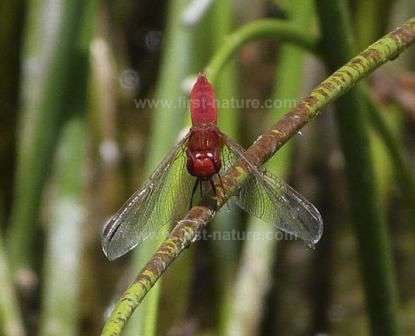
A Broad Scarlet Dragonfly. Picture: Clive Viney
Also caught on camera were their delicate damselfly cousins: Copper Demoiselle, Iberian Bluetail, White Featherleg and Goblet-marked Damselfly. And that was all in the space of a couple hours in the middle of a very hot and cloudless summer’s day.
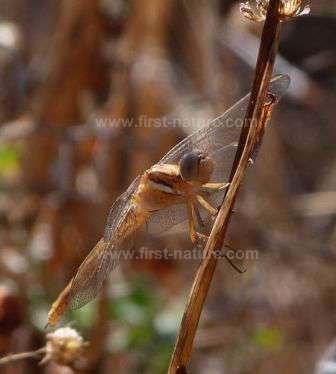
A female Epaulet Skimmer Dragonfly. Picture: Clive Viney
After winter rains the Alportel River, like all seasonal rivers in the Algarve, can be a raging torrent hurrying to flood the lowlands but as the dry summer sets in only pools, separated by long stretches of stony riverbed, remain. But these are not stagnant pools as beneath the stones the river still flows, albeit very gently. These pools and the surrounding vegetation are oases and reservoirs of life.

A Violet Dropwing Dragonfly. Picture: Clive Viney
Only the largest pools will remain until the rains return. Across the surface River Skaters glide and on approaching any pool bright green or brown Iberian Water Frogs leap noisily into the water. Watch out, as well, for terrapins sliding down the banks to submerge. Look into the water or wade if you wish, it’s refreshingly cool, and there will be plenty of fish, crayfish and even harmless Viperine Snakes going about their business.

A Bath White Butterfly on Applemint. Picture: Clive Viney
Sit quietly in the shade and birds will come to drink and even a busy Southern Water Vole might be seen. Superb male dragonflies patiently perch and patrol; they wait for duller females to appear. Blackcaps still sing, Nightingales, although no longer singing, are busy feeding young and to a Kingfisher this is a larder.
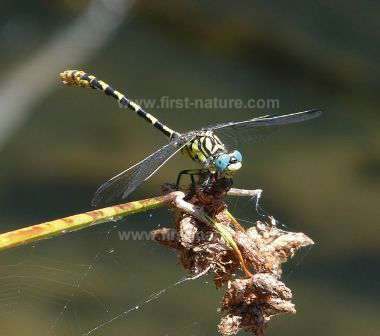
A Small Pincertail Dragonfly. Picture: Clive Viney
Wildflowers have all but finished and with them the butterflies disappeared. However, on the stony riverbeds, pungent Apple Mint and Pennyroyal are now at their best and where there is dampness, patches of Greater Bird’s-foot Trefoil linger. On this July day a superb male Adonis Blue settled on trefoil and a Bath White enjoyed the Apple Mint.
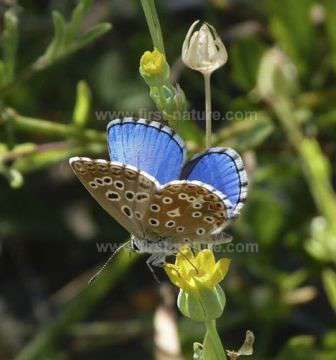
An Adonis Blue Butterfly. Picture: Clive Viney
Don a sunhat and paddlers, apply sunblock and repellent, carry some water and take a short stroll along any dry riverbed. Who knows what you might find.
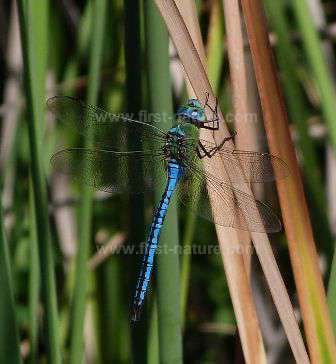
A Blue Emperor Dragonfly. Picture: Clive Viney
Further reading - there is now available an excellent bilingualguide to the dragonflies and damselflies of Portugal: As Libelulas de Portugal - the Dragonflies of Portugal by Ernesto Maravalhas & Albano Soares - Booky Publisher, 09.2013 - available worldwide through Apollo Booksellers. (ISBN 978-989986140-4 Deposito Legal 364614/13)Please Help Us: If you have found this information interesting and useful, please consider helping to keep First Nature online by making a small donation towards the web hosting and internet costs.
Any donations over and above the essential running costs will help support the conservation work of Plantlife, the Rivers Trust and charitable botanic gardens - as do author royalties and publisher proceeds from books by Pat and Sue.

